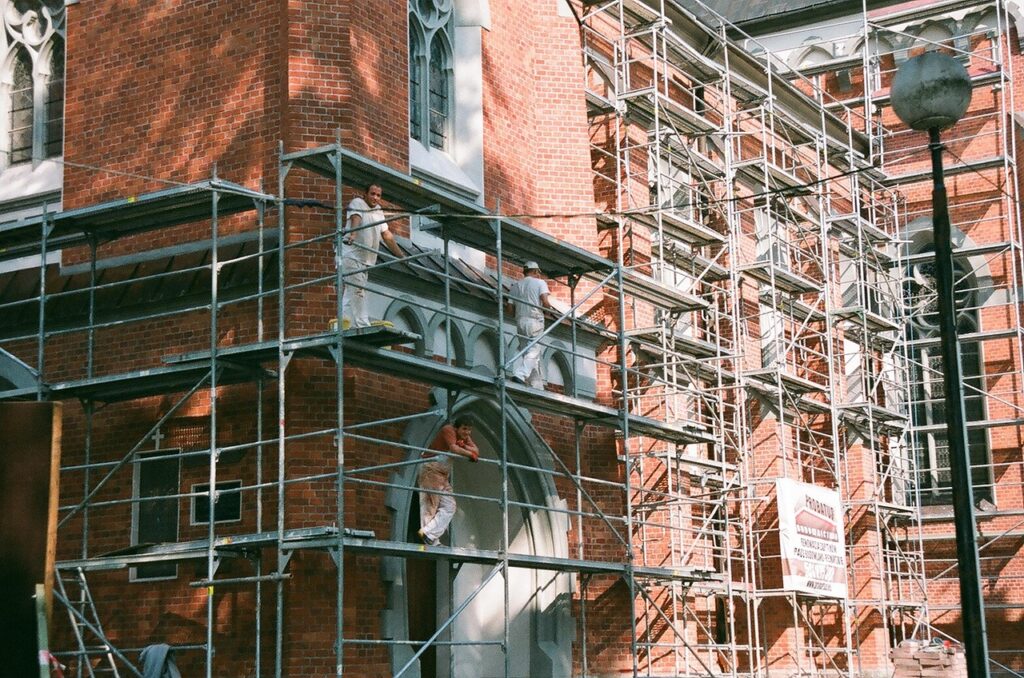
Toronto’s historic buildings tell stories through weathered brick and timeless stone facades. Heritage masonry restoration Toronto experts know that fall timing prevents expensive winter damage to these precious structures. Old buildings need special care that honors their original craft while protecting them from harsh Canadian weather.
The Science Behind Fall Timing
Winter freeze-thaw cycles destroy more heritage masonry than any other natural force. Heritage masonry restoration Toronto specialists recommend fall work because mortar needs proper curing time before frost hits. Cold weather below 4.4°C makes quality repairs nearly impossible to complete properly.
Heritage Materials vs Modern Methods
Traditional Lime Mortars
Historic buildings used soft lime-based mortars that breathe naturally with seasonal changes. These materials expand and contract without cracking under normal conditions. Modern cement mortars are too hard and trap moisture inside old brick walls.
Brick Quality Differences
Victorian-era bricks were fired at lower temperatures than today’s products. This softer clay absorbs more moisture and needs gentle handling during repairs. Original bricks require matching replacements that won’t damage surrounding materials.
Stone Weathering Patterns
Toronto’s heritage limestone and sandstone erode differently than modern building stones. Acid rain and pollution accelerate natural aging processes on carved details. Proper restoration preserves these irreplaceable architectural features for future generations.
Why Fall Weather Works Best
Perfect Curing Conditions
Cool autumn temperatures allow lime mortars to cure slowly and properly. Hot summer sun dries repairs too fast while winter cold stops chemical bonding. Fall’s stable weather gives restoration materials time to develop full strength.
Moisture Control Benefits
Lower humidity levels help new mortar joints set without water interference. Spring rains would wash out fresh work before it hardens completely. Dry fall conditions create ideal working environments for delicate heritage repairs.
Access Advantages
Bare tree branches reveal hidden damage that summer foliage conceals from view. Equipment can reach problem areas more easily without leaves blocking access. Ground stays firm enough for heavy machinery and scaffold placement.
Common Heritage Damage Patterns
Mortar Joint Deterioration
Original pointing washes away after decades of Toronto weather exposure. Missing mortar lets water penetrate deep into wall systems where it causes structural harm. Proper repointing uses period-correct materials and traditional techniques.
Spalling Brick Faces
Freeze-thaw damage pops off brick face layers exposing porous inner cores. Once started, this process accelerates quickly without proper intervention from skilled craftsmen. Early repair prevents total brick replacement costs.
Structural Settlement Issues
Heritage buildings shift slightly as foundations age and settle over time. This movement creates stress cracks in rigid modern repairs that don’t flex. Flexible lime mortars move with buildings instead of fighting natural movement.
Professional Assessment Value
Hidden Problem Detection
Experts spot early warning signs that property owners typically miss completely. Thermal imaging reveals moisture problems inside wall cavities before visible damage appears. Professional eyes catch small issues before they become major structural concerns.
Heritage Compliance Guidance
Historic districts have strict rules about acceptable repair materials and restoration methods. Skilled teams understand Toronto’s heritage preservation standards and permit requirements. Proper documentation prevents legal problems with city oversight departments.
Long-Term Planning Strategy
Pros create maintenance schedules that prevent emergency situations during harsh winter months. They prioritize repairs based on structural importance and damage progression rates. Quality work extends heritage building lifespans by many decades.
Investment Protection Benefits
Property Value Preservation
Well-maintained heritage buildings hold their value better than neglected historic structures. Quality restoration work often increases property values beyond the repair investment. Heritage tax credits may offset restoration costs in qualified districts.
Cost-Effective Timing
Fall repairs cost significantly less than emergency winter fixes when weather damages become urgent. Planned work allows proper material sourcing and skilled craftsman scheduling. Group repairs reduce setup costs for scaffolding and specialized equipment.
Your heritage building deserves care that honors its historical significance and craftsmanship. Fall represents the optimal season for thoughtful restoration work that protects these architectural treasures. Contact Cummins Restoration today for expert assessment and period-correct repair solutions.





